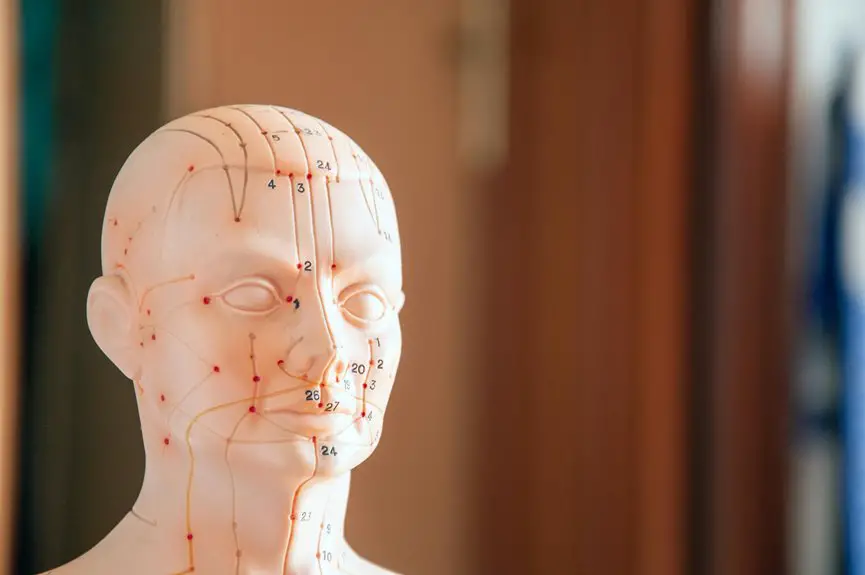Have you ever noticed discomfort while sitting in your chair for long periods? It could be due to pressure points that aren't getting the support they need. Common areas like your lower back, thighs, and shoulders can lead to distractions and reduced productivity if ignored. Understanding these pressure points is the first step towards a more comfortable seating experience. Let's explore how to identify and address these issues effectively.
Table of Contents
Key Takeaways
- Check for lower back discomfort; lack of lumbar support may indicate pressure on the lower back pressure point.
- Assess thigh numbness; if the seat is too shallow or deep, it may restrict blood flow to your legs.
- Evaluate shoulder tension; poor arm support can lead to stiffness, highlighting a pressure point issue.
- Notice persistent soreness; frequent discomfort after sitting suggests pressure points are not well supported.
- Observe the frequency of position shifts; constant adjustments may signal discomfort from pressure points in your chair.
Understanding Pressure Points: What They Are and Why They Matter
When you sit in a chair for long periods, it's crucial to understand pressure points and their impact on your comfort and well-being.
Pressure points are specific areas on your body that experience increased pressure when you sit, often leading to discomfort or pain. These points can restrict blood flow and cause muscle fatigue, making it difficult to focus or enjoy your time seated.
Recognizing where these pressure points are helps you make better choices about your seating options. By adjusting your posture or selecting a chair designed to alleviate pressure, you can enhance your overall comfort.
Ultimately, understanding pressure points empowers you to create a more supportive seating experience that promotes well-being during those extended sitting sessions.
Common Pressure Points in Office Chairs
Identifying common pressure points in office chairs can significantly improve your comfort while working.
Knowing where these pressure points are helps you adjust your seating position or choose a better chair.
Here are three common pressure points to consider:
- Lower Back: If your chair lacks lumbar support, your lower back can suffer, leading to discomfort over time.
- Thighs: A seat that's too deep or too shallow can put pressure on your thighs, restricting blood flow and causing numbness.
- Shoulders: If your chair doesn't support your arms properly, tension can build in your shoulders, leading to stiffness and pain.
Signs That Indicate Pressure Point Discomfort
You might notice signs of pressure point discomfort creeping in if your chair isn't fitting your body properly. One common indicator is persistent soreness in your back, neck, or thighs after sitting for a while.
You may also experience tingling or numbness, particularly in your legs or arms, which can signal that blood flow is restricted. If you find yourself shifting positions frequently to relieve discomfort or struggling to maintain focus due to pain, these are red flags as well.
Additionally, you might notice tension building in your shoulders or a consistent urge to stretch. Pay attention to these signs, as they can help you identify if your chair setup needs reevaluation to enhance your comfort and productivity.
Tips for Adjusting Your Chair to Alleviate Pressure
Adjusting your chair can significantly reduce pressure points and enhance your comfort. Simple tweaks can make a big difference.
Here are three tips to help you find your ideal setup:
- Adjust the Height: Ensure your feet rest flat on the floor, with your knees at a 90-degree angle. This promotes good circulation and reduces strain.
- Modify the Backrest: Tilt the backrest slightly to support your lumbar region. This helps align your spine and alleviates pressure on your lower back.
- Change the Armrest Position: Position your armrests so your shoulders relax and your elbows stay close to your body. This prevents tension buildup in your neck and shoulders.
Making these adjustments can lead to a more comfortable seating experience.
When to Consider a Chair Replacement for Better Comfort
Even with the right adjustments, there comes a time when a chair may no longer provide the comfort and support you need.
If you find yourself frequently shifting positions, feeling sore after sitting, or developing new aches, it's a sign to consider a replacement. Pay attention to any visible wear and tear, like fraying fabric or a sagging seat.
If your chair lacks proper lumbar support or doesn't fit your body's dimensions, it's time for an upgrade.
Additionally, if you're spending long hours seated, investing in a quality chair designed for comfort can significantly enhance your well-being.
Don't hesitate to prioritize your comfort; a new chair can make all the difference in your daily productivity and overall health.
Frequently Asked Questions
How Do I Measure Pressure Points in My Chair?
To measure pressure points in your chair, sit comfortably and use a pressure mapping pad or a simple method like sitting on a piece of cardboard, marking areas where you feel discomfort or excess pressure.
Can Pressure Points Vary Based on Body Type?
Yes, pressure points can definitely vary based on body type. Your unique shape, weight distribution, and posture all influence where pressure builds up, affecting comfort and support in any seating arrangement you use.
What Materials Reduce Pressure Points in Chairs?
Materials like memory foam, gel, or latex cushions conform to your body, distributing weight evenly. These options help reduce pressure points, offering better support and comfort whether you're sitting for a few minutes or several hours.
Are There Specific Exercises to Relieve Pressure Points?
Yes, specific exercises like gentle stretching, yoga poses, and foam rolling can relieve pressure points. Incorporating these into your routine helps improve circulation and flexibility, reducing discomfort and promoting overall well-being. Give them a try!
How Often Should I Reassess My Chair for Pressure Points?
You should reassess your chair for pressure points regularly, ideally every few months. Pay attention to any discomfort or changes in your posture, and don't hesitate to adjust or replace your chair as needed.




